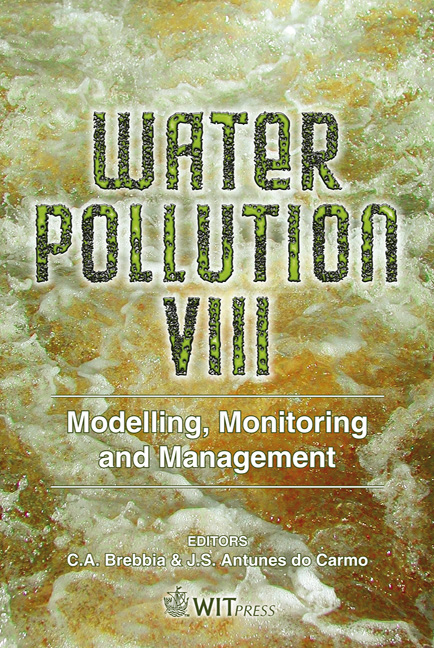Numerical Study Of An Oil Spill Containment Boom By The Finite-element Method
Price
Free (open access)
Transaction
Volume
95
Pages
10
Published
2006
Size
546 kb
Paper DOI
10.2495/WP060251
Copyright
WIT Press
Author(s)
F. Muttin & S. Nouchi
Abstract
Oil-spill boom is a technological response to water pollution by floating hydrocarbon. A boom is composed mainly of a floating tube, an immerged skirt, and a longitudinal chain on the skirt bottom. A membrane finite-element is used to represent numerically the different parts of the boom. The dominant external force comes from maritime current velocity. The gravity force comes mainly from the chain. It is balanced by the hydrostatic force applied to the tube bottom line. It is admitted that a sea current higher than 0.35 m/s produces oil leaks under the boom. The numerical model is available to study a full boom contingency planning. A boom section model is defined first, having a minimal number of degrees of freedom. It permits using a homothetic scaling to provide an accurate length model. After, by applying a duplication operator, a real-life length model is obtained (L>750 m). It is completed by the mooring of the barrage on the sea bed. The different assumptions made on the elementary model are given. Operational results on a boom contingency planning are also given. Parameters like skirt angle, skirt curvature, and chain stress, handle the boom response performances. This work was undertaken with the support of the French Environmental Administration. Keywords: hydrocarbon, oil-spill boom, contingency planning, finite-element. 1 Introduction To recover oil on water during an oil-spill different mechanical responses are commonly used: confinement boom, skimmer pump and \“koseq” rigid dikes on both sides of the recovery vessel. This paper presents the study of booms by a numerical analysis.
Keywords
hydrocarbon, oil-spill boom, contingency planning, finite-element.





